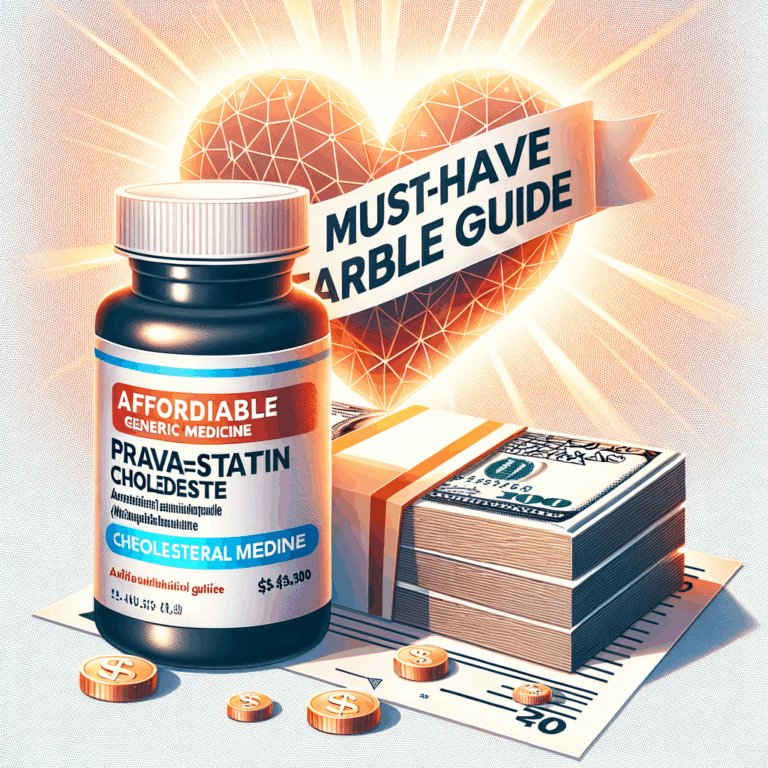
- Introduction
- What Is Gout?
- How Allopurinol Works
- Mechanism of Action
- Key Benefits
- Proven Effectiveness: What Research Shows
- Who Should Use Allopurinol?
- Dosing and How to Start
- Initial Dosing
- Titration to Target
- Monitoring
- Side Effects and Safety
- Drug Interactions and Precautions
- Affordability and Access
- Tips to Reduce Cost
- Comparing Allopurinol to Other Treatments
- Febuxostat
- Uricosuric Agents
- Biologic and Enzyme Therapies
- Preventing Flares During Treatment
- Lifestyle Changes That Complement Allopurinol
- Practical Tips for Patients
- Special Populations
- Older Adults
- Pregnancy and Breastfeeding
- Patients with Kidney Disease
- When to See a Specialist
- Common Misconceptions
- How to Talk to Your Doctor
- Case Studies: Typical Patient Scenarios
- Checklist Before Starting Allopurinol
- Summary and Takeaway
- Frequently Asked Questions (FAQs)
- References
Introduction
Gout causes sudden, intense joint pain. Many people call it a curse of the big toe. However, modern medicine gives clear paths to control it. Allopurinol for gout treatment stands out as a proven and affordable option. In this article, I explain how it works. I also cover safety, dosing, cost, and practical steps for patients.
You will learn why doctors prescribe allopurinol. Also, you will see when other choices might suit you better. Finally, I include answers to common patient questions. Read on to gain confidence about managing gout with a low-cost, effective drug.
What Is Gout?
Gout is a form of inflammatory arthritis. It happens when uric acid crystals collect in joints. These crystals trigger severe pain and swelling. Most attacks affect the big toe, but other joints can suffer too.
Uric acid comes from purine breakdown in the body and from food. Normally, kidneys remove uric acid. But when production exceeds removal, levels rise. Over time, persistent high levels cause crystal deposits. Therefore, treating gout means both easing attacks and lowering uric acid levels.
How Allopurinol Works
Mechanism of Action
Allopurinol blocks xanthine oxidase. This enzyme helps make uric acid. Once blocked, the body makes less uric acid. As a result, blood uric acid drops. Over weeks to months, crystals dissolve. Consequently, attacks become less frequent.
Key Benefits
– Lowers serum uric acid reliably.
– Reduces gout flares over time.
– Prevents tophi and joint damage.
– Suitable for long-term use in most patients.
Thus, allopurinol tackles the root cause of gout. It prevents damage rather than only treating pain.
Proven Effectiveness: What Research Shows
Clinical trials and long-term studies support allopurinol for gout. Researchers found that sustained uric acid lowering reduces flare frequency. Moreover, studies show lower risks of tophus growth and joint destruction.
A landmark trial compared allopurinol with other urate-lowering therapies. The trial showed comparable effectiveness with favorable safety. Other large studies confirm that reaching target uric acid (<6 mg/dL) prevents complications. Therefore, clinicians consider allopurinol a first-line choice for many patients.
Who Should Use Allopurinol?
Doctors recommend allopurinol for patients with frequent attacks. They also prescribe it for those with tophi or joint damage. Additionally, patients with kidney stones from uric acid may benefit. Finally, people with very high uric acid levels often need medication.
However, doctors avoid starting allopurinol during an acute flare. Starting during an attack can temporarily provoke more flares. Instead, clinicians wait until the flare subsides. Then they begin treatment and use short-term prophylaxis when needed.
Dosing and How to Start
Initial Dosing
Doctors usually start low and go slow. A common starting dose is 100 mg once daily. For some patients, clinicians use 50 mg daily. Then they check uric acid after a few weeks. If needed, they increase the dose gradually.
Titration to Target
The treatment goal is serum uric acid <6 mg/dL. For severe cases, the target may be <5 mg/dL. Clinicians increase the dose every 2 to 4 weeks. They watch labs and symptoms during titration. Many patients need 300 mg daily. Some require 400 to 800 mg in divided doses.
Monitoring
– Check serum uric acid after 2 to 4 weeks of changes.
– Monitor kidney and liver function at baseline and periodically.
– Watch for signs of allergic reactions or rash.
Effective monitoring reduces risks and improves outcomes.
Side Effects and Safety
All medicines have side effects. Allopurinol commonly causes mild rash or gastrointestinal upset. More serious reactions can occur, but they are rare. The most dangerous is allopurinol hypersensitivity syndrome (AHS). AHS can include severe rash, fever, and organ damage.
To reduce risk, doctors screen for the HLA-B5801 allele in some populations. They often test people of Han Chinese, Thai, or Korean descent. Those with positive tests have a much higher risk for severe reactions. Further, slow titration and early recognition help keep patients safe.
Drug Interactions and Precautions
Allopurinol interacts with a few common drugs. For example, it can increase azathioprine and mercaptopurine toxicity. Therefore, patients on those drugs need dose adjustments. Also, certain diuretics may raise uric acid or affect kidneys. Always tell your doctor about all medications and supplements.
If you have kidney disease, doctors adjust dosing carefully. They may use lower starts or longer intervals. However, most patients with kidney disease can still take allopurinol safely under supervision.
Affordability and Access
Allopurinol ranks among the cheapest gout medicines. Generic versions cost far less than branded options. Many insurance plans cover allopurinol with low copays. Even without insurance, pharmacy discount programs make it affordable.
Compare costs:
– Generic allopurinol: low monthly cost in most regions.
– Branded urate-lowering drugs: significantly higher price.
– Biologic agents and new treatments: often cost thousands per year.
Thus, allopurinol offers strong value. It provides proven results at a modest price. For many patients, affordability improves adherence and outcomes.
Tips to Reduce Cost
– Use generic allopurinol.
– Check pharmacy discount cards and apps.
– Ask your provider about samples or patient assistance.
– Compare prices among pharmacies and online retailers.
These steps often cut out-of-pocket spending significantly.
Comparing Allopurinol to Other Treatments
Febuxostat
Febuxostat also blocks xanthine oxidase. Some studies show it lowers uric acid more than allopurinol. However, febuxostat costs more. Also, safety concerns exist for certain patients with heart disease. Consequently, doctors reserve febuxostat for select cases.
Uricosuric Agents
Probenecid and similar drugs increase uric acid excretion. They work well for patients who under-excrete uric acid. However, they often fail when kidney function is poor. Moreover, they interact with several drugs. Therefore, clinicians choose them selectively.
Biologic and Enzyme Therapies
Pegloticase and other advanced therapies rapidly lower uric acid. These options treat severe, refractory gout. They work when other drugs fail. Yet, they cost far more and have infusion-related risks. Thus, they serve as last-resort options for complex cases.
Preventing Flares During Treatment
Starting urate-lowering therapy can trigger flares. To prevent this, clinicians often use short-term flare prophylaxis. They prescribe low-dose colchicine or NSAIDs for the first 3 to 6 months. This approach reduces early flares and improves adherence.
Also, lifestyle changes help. Staying hydrated, reducing alcohol, and avoiding high-purine foods lower flare risk. Combined with medication, these steps improve long-term control.
Lifestyle Changes That Complement Allopurinol
Medication works best with healthy habits. Reducing alcohol, especially beer and spirits, helps lower uric acid. Likewise, cut back on red meat and seafood that are high in purines. Also, losing weight improves uric acid metabolism.
Additionally, eat low-fat dairy and vegetables regularly. These foods may offer protective effects. Finally, stay hydrated and exercise regularly. Together, these measures reduce attack frequency and enhance wellbeing.
Practical Tips for Patients
– Always take allopurinol with water to reduce GI upset.
– Take it at the same time every day to build routine.
– Keep a symptom diary to track flares and triggers.
– Inform any new provider that you take allopurinol.
– Do not stop medication abruptly without consulting your doctor.
Such habits improve safety and long-term success.
Special Populations
Older Adults
Older adults often have kidney disease and multiple medications. Clinicians start allopurinol cautiously in the elderly. They monitor labs more frequently. However, age alone is not a reason to avoid therapy.
Pregnancy and Breastfeeding
Data on allopurinol in pregnancy are limited. Many doctors avoid it during pregnancy unless benefits outweigh risks. If you are pregnant or planning pregnancy, discuss alternatives with your provider.
Patients with Kidney Disease
Allopurinol dosing requires care in kidney impairment. Still, many patients with reduced kidney function benefit from treatment. Lower starting doses and slower titration decrease adverse events. Nephrologists often co-manage complex cases.
When to See a Specialist
Primary care doctors manage many gout cases. However, see a rheumatologist if:
– You have frequent flares despite treatment.
– You develop tophi or joint damage.
– You tolerate allopurinol poorly.
– You need advanced therapy like pegloticase.
A specialist can tailor treatment and provide options beyond standard care.
Common Misconceptions
Many patients think allopurinol treats pain immediately. In truth, it lowers uric acid slowly. Pain relief for acute attacks requires other drugs. Another myth: stopping medication when symptoms improve is safe. Unfortunately, stopping leads to relapse and more damage.
Also, some believe lifestyle alone cures gout. While diet helps, medication often remains necessary. Finally, worry about side effects prevents some from starting therapy. Yet, most patients tolerate allopurinol well under monitoring.
How to Talk to Your Doctor
Be open about symptoms and goals. Ask about target uric acid levels. Discuss the plan for monitoring and flare prevention. Also, mention other medical conditions and medications. This information helps your doctor pick the safest approach.
If cost concerns exist, bring them up. Many providers can suggest lower-cost options or assistance programs. Shared decision-making improves both adherence and outcomes.
Case Studies: Typical Patient Scenarios
Case 1: A 55-year-old man with recurrent toe attacks. He has no major comorbidities. His doctor starts allopurinol 100 mg daily. After a month, blood uric acid falls. The doctor increases to 300 mg to reach target. Over a year, attacks drop from monthly to none.
Case 2: A 68-year-old woman with kidney disease. She receives allopurinol 50 mg daily initially. Her provider monitors kidney function closely. They titrate slowly and achieve uric acid control. She avoids further kidney stones and joint damage.
These cases show common paths to success with proper care.
Checklist Before Starting Allopurinol
– Confirm diagnosis of gout.
– Measure baseline serum uric acid.
– Check kidney and liver function tests.
– Review medication list for interactions.
– Consider HLA-B5801 testing if at risk.
– Plan for flare prophylaxis and monitoring.
Following this checklist reduces risk and improves outcomes.
Summary and Takeaway
Allopurinol for gout treatment offers proven, affordable relief. It lowers uric acid, prevents flares, and protects joints. Most patients tolerate it well when started slowly and monitored. Additionally, its low cost makes it accessible to many. Combine medication with lifestyle changes and regular follow-up. In this way, you can control gout and improve quality of life.
Now, I answer questions you may still have.
Frequently Asked Questions (FAQs)
1. What should my target serum uric acid be while on allopurinol?
– Most guidelines aim for <6 mg/dL. If you have severe tophi, a target <5 mg/dL may apply.
2. How long until allopurinol reduces gout attacks?
– You may see fewer flares after a few months. Full benefits often appear after 6 to 12 months.
3. Can I start allopurinol during an acute gout attack?
– Doctors usually delay until the attack resolves. Starting during a flare can worsen symptoms.
4. Do I need genetic testing before taking allopurinol?
– Testing for HLA-B5801 is recommended for certain ethnic groups. Your doctor will advise based on ancestry and risk.
5. Can allopurinol cause hair loss or depression?
– These effects are uncommon. If you notice new symptoms, report them to your clinician.
6. If I have kidney disease, can I still take allopurinol?
– Yes, with dose adjustments and close monitoring. Many patients with kidney impairment use it safely.
7. What if allopurinol doesn’t lower my uric acid enough?
– Your doctor may increase the dose, switch to febuxostat, add a uricosuric, or consider advanced therapies.
8. How long must I stay on allopurinol?
– Many patients need lifelong therapy. Some with clear triggers and low uric acid may stop under supervision.
9. Will allopurinol interact with common blood pressure medicines?
– Allopurinol generally has few interactions with blood pressure drugs. However, it interacts with azathioprine and some cancer drugs. Always list all medicines to your provider.
10. Is it safe to drink alcohol while taking allopurinol?
– Alcohol can raise uric acid and trigger flares. Limit intake, especially beer and spirits, even while on medication.
References
– American College of Rheumatology. 2020 Guidelines for the Management of Gout. https://www.rheumatology.org/Practice-Quality/Clinical-Support/Clinical-Practice-Guidelines/Gout
– Neogi T, et al. 2019 American College of Rheumatology Guideline on Management of Gout. Arthritis Care Res (Hoboken). https://doi.org/10.1002/acr.23763
– Stamp LK, et al. Allopurinol hypersensitivity syndrome and HLA-B5801. Arthritis Rheumatol. https://pubmed.ncbi.nlm.nih.gov/
– FitzGerald JD, et al. 2020 American College of Rheumatology Guideline on Gout Management. https://pubmed.ncbi.nlm.nih.gov/
– Pascual E, et al. Urate-lowering therapy and gout management review. Lancet. https://www.thelancet.com/
– UpToDate. Allopurinol: Drug Information. https://www.uptodate.com/contents/allopurinol-drug-information
Note: Some links point to general resources or PubMed entries for broader reading. If you want specific studies or direct PDFs, tell me which areas interest you most.



